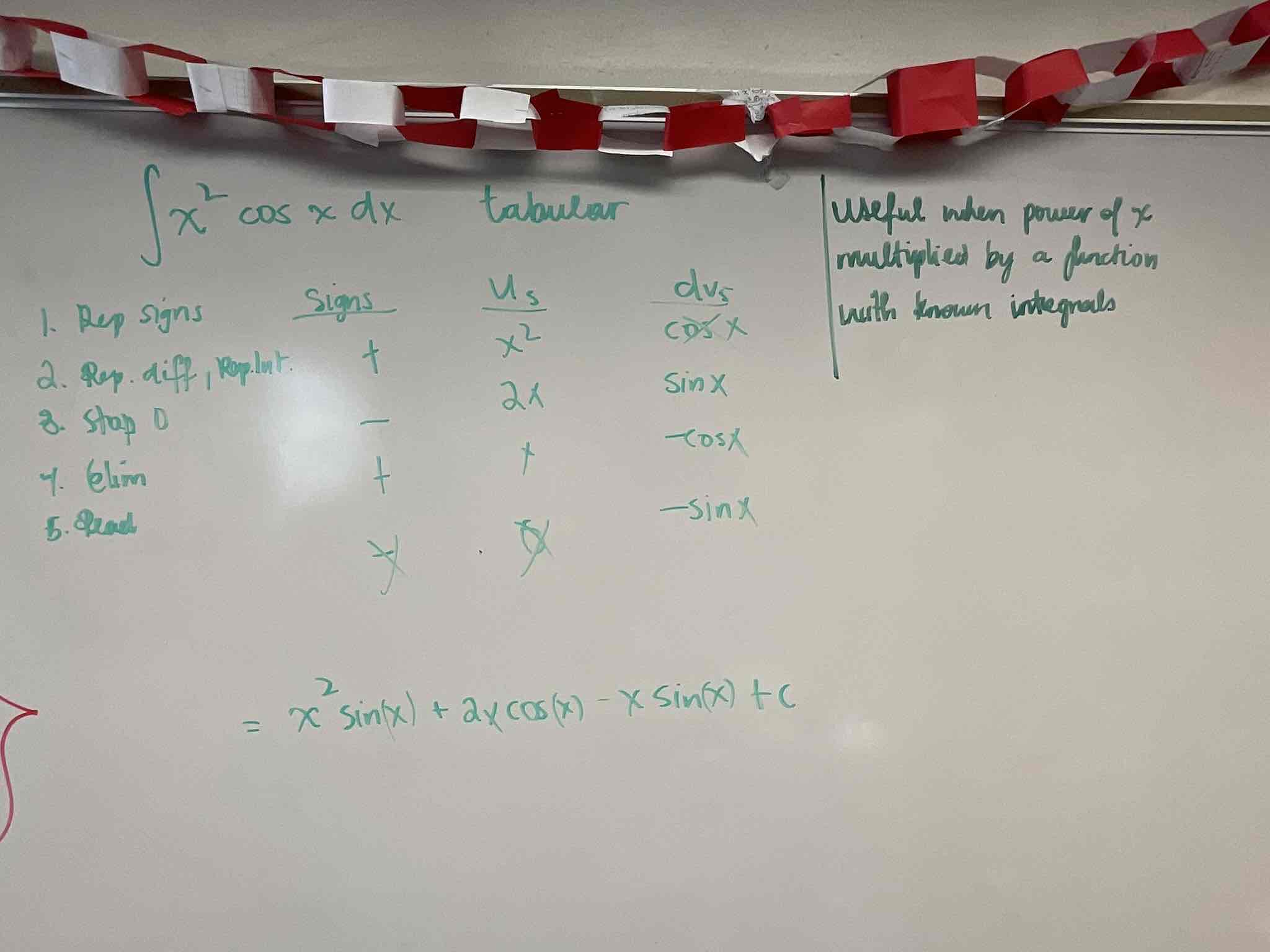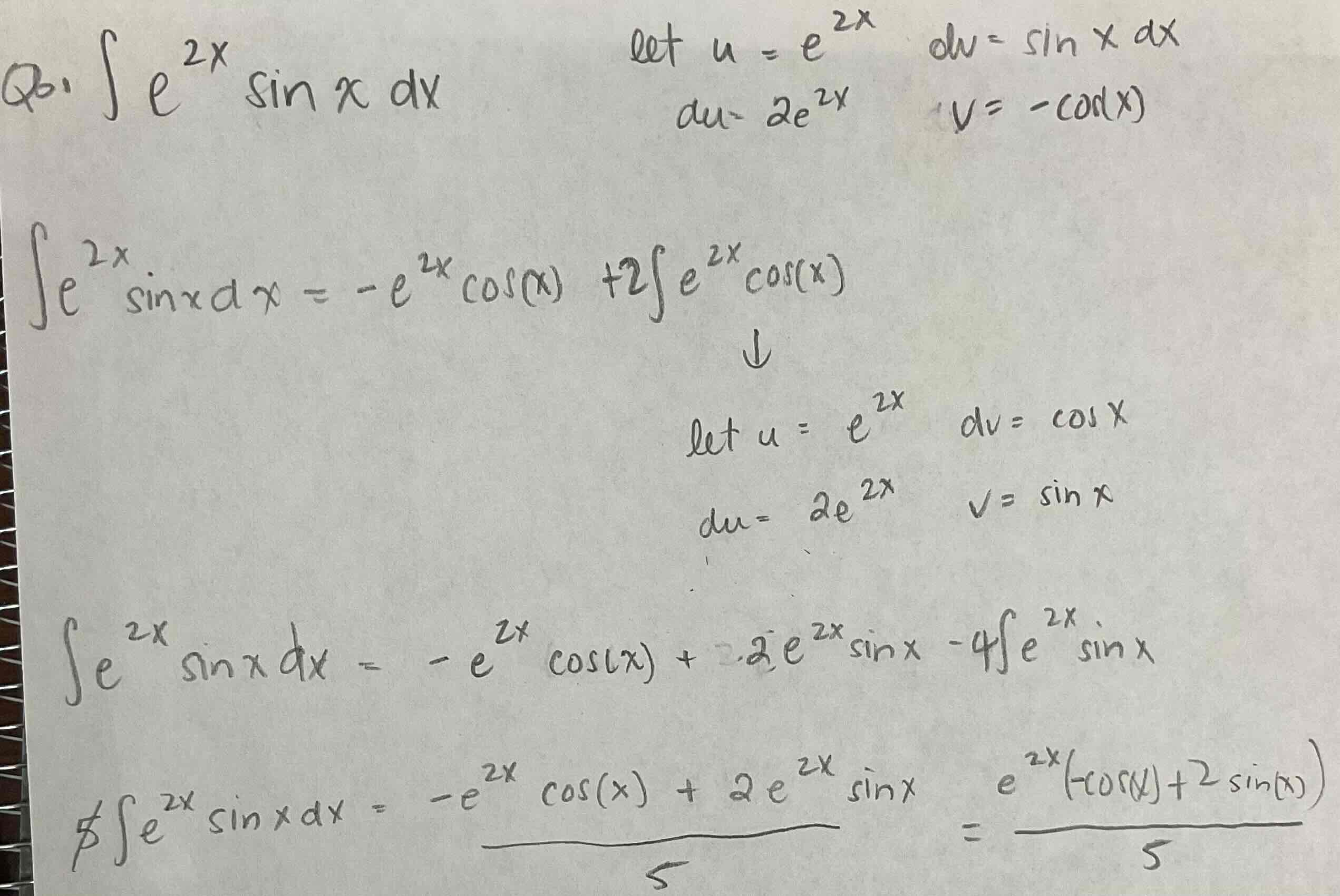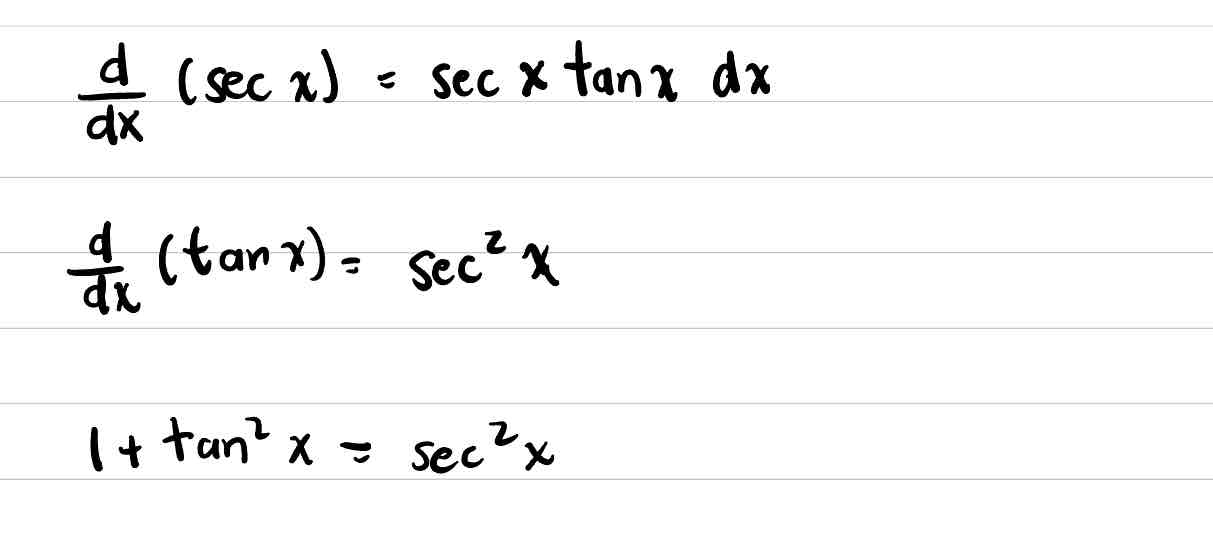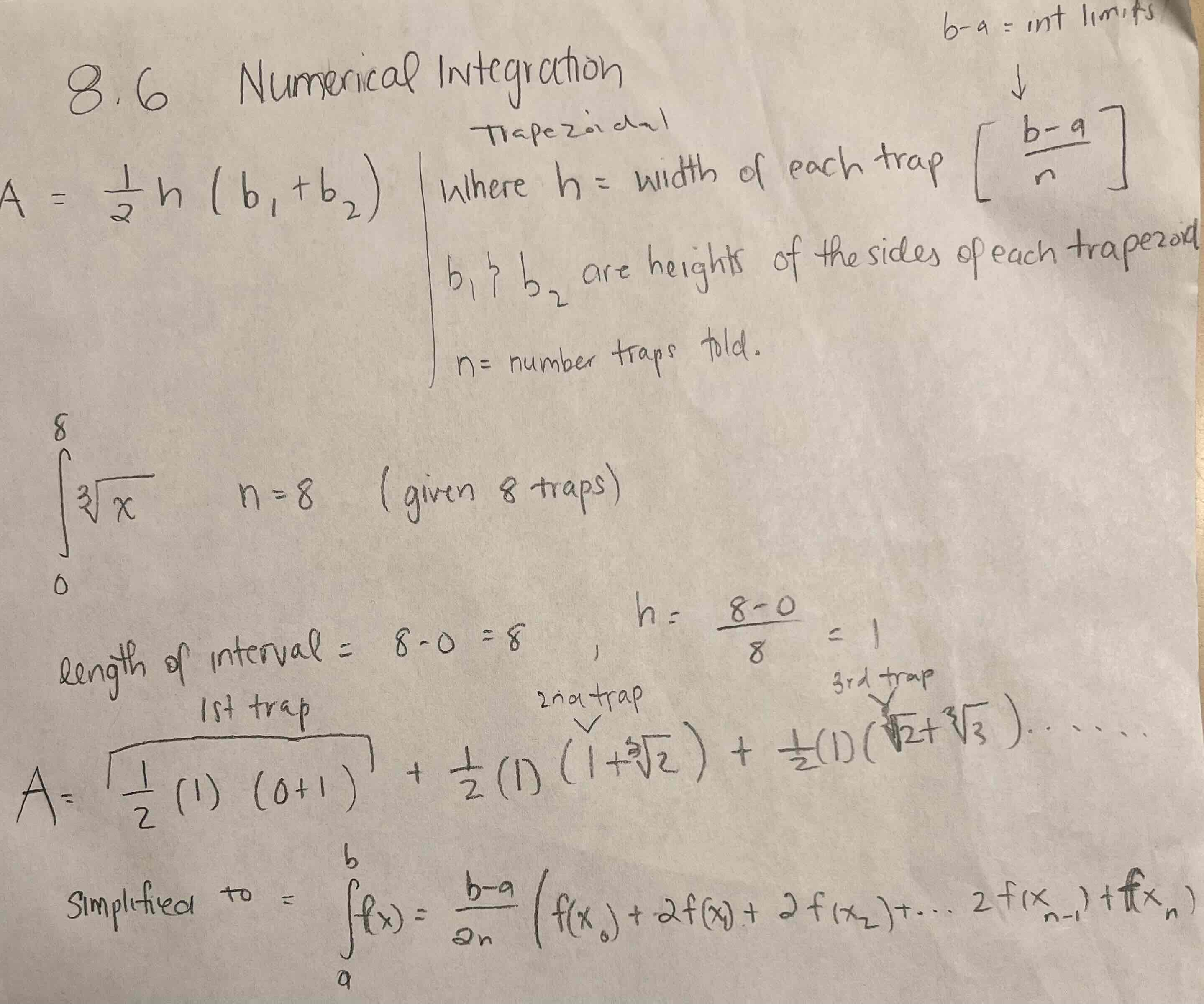Calculus 2 Section 8: Integration Techniques and Improper Integrals
1/31
Earn XP
Description and Tags
Sorry, this will only help if you already have a solid understanding of the concepts!
Name | Mastery | Learn | Test | Matching | Spaced |
|---|
No study sessions yet.
32 Terms
The integral of a product…. (8.2)
is NOT equal to the product of its integrals
Formula for Basic Integration by parts (8.2)
∫udv = uv - ∫vdu

What is the rule for selecting u and dv during integration by parts (8.2)
Let u = the simpler derivative
Let dv = something you can integrate
(8.2)
∫csc(x) dx
∫csc(x)cot(x) dx
d/dx csc(x)
∫csc(x) dx = -ln|csc(x)+cot(x)| + C
∫csc(x)cot(x) dx = -csc(x) + C
d/dx csc(x) dx = -(csc(x)cot(x)) x¹
When do you use Tabular Integration? (8.2)
Useful when there is a power of x multiplied by a function with known integrals.
E.g. ∫x²cos(x) dx

What are the steps for tabular integration? (8.2)
use [∫x²cos(x) dx] as an example
hint (7 steps)
Set up three columns: label them signs, Us, DVs.
Under signs make repeating + and - signs.
Let X = U , let function = dv
Repeatedly differentiate Us (X) until 0
Repeatedly integrate DVs (the function) until lined with 0
Eliminate: First function, Last sign, the 0
Read across

When to use circular integration by parts? (8.2)
Used specifically for the form: (* = x)
[ ∫e²*sin(bx) dx ] or [ ∫e²*cos(bx) dx ]
![<p>Used specifically for the form: (* = x)</p><p>[ ∫e²*sin(bx) dx ] or [ ∫e²*cos(bx) dx ]</p>](https://knowt-user-attachments.s3.amazonaws.com/787ad676-487c-4316-8dc4-ff8c8768c628.jpeg)
Steps for Circular Integration by Parts (8.2)
use [ e²*sin(x) dx ] as an example
Keep the left hand integral (meaning left of the equal sign).
Integrate by parts twice
simplify (should end up with function similar to the left hand side).

Rule for ln (or logs) when integrating by parts? (8.2)
Always let ln = u (we don’t have a method for integrating ln at this level in calculus)
(8.2) The three arc integrals/derivatives
arctan
arcsin
arcsec
18, 19, and 20 from image

What three substitution relationships are used the form [ ∫sin*(x)cos*(x) dx ] let * = numbers (8.3)
Pythag
Power reducing for sin²x
Power reducing for cos²x

What is the guideline when sine is odd and positive? (8.3)
Save one sine factor for du
covert the rest to cosine
Expand and then integrate (usually u-sub)
What is the guideline when cosine is odd and positive? (8.3)
Save one cosine factor for du.
Convert the rest to sines.
Expand and then integrate.
What is the guideline when the powers of both are even and nonnegative? (8.3)
Make repeated use of p-reducing formulas to make odd. Then follow Cosine (odd and positive) guideline.
What three relationships are used for integrating powers of secant and tangent [∫sec*xtan*x dx]
tangent identity

What is the guideline for when sec is odd and positive?
Save one secant squared for du
concert rest to tangents
expand and integrate
What is the guideline for when tangent is odd and positive? (8.3)
Save one secant-tangent factor for du
covert the rest to secants
expand and then integrate
Guideline when there are no secants, and the power of tangent is even and positive?
Convert a tangent squared factor to a secant squared factor.
Expand and then repeat if necessary
When there are only secants and the power is odd and positive? (8.3)
Use integration by parts
Guideline for when all guidelines fail?
Convert all to sines and cosines
What is trigonometric substitution used for? (8.4)
To eliminate radicals in the integrand
Explain the “Constant - Function” identity
For integrals containing √a²-u²
letting u = asinδ
then √a²-u² = acosδ
Explain the “Constant + Function” identity
For integrals containing √a²+u²
letting u = atanδ
then √a²+u² = asecδ
Explain the “Function - Constant” identity
For integrals containing √u²-a²
letting u = asecδ
then √u²-a² = atanδ
How do you complete there square to factor a quadratic equation? Using x²-6x+5 as an example
Half the coefficient of x
Square it
add then minus it
Factor with added number, simplify the other two
(x-3)² -9+5
When do we use partial fraction decomposition? (8.5)
When the denominator of an integrand is factorable or can be completed (and would other wise be solved by trigonometric substitution), decomposition may be preferable.
Name the 4 cases of partial decomposition and describe each (8.5)
Case 1: Distinct Linear Factors
Numerators will all be constants, None of the exponents repeat
Case 2: Repeated Linear factors
Numerator will still all be constant, denominators repeat to sum to power…
Case 3: Irreducible Quadratic Factor
Numerator will be Bx + c, denom will be irreducible quadratic
PLUS
One linear
Case 4: Repeated Quadratic
Numerator will be Bx + C, denominators repeat to sum to power
State the formula for trapezoidal numerical integration (8.6)

State the formula for Parabolic Numeric Integration (Simpson’s Rule) (8.6)

What must we do when the numerator is SAME or larger power than the denominator in partial decomposition?
Long division. ALWAYS
In what two (general) occasions does an improper integral occur?
When one of the limits of integration is ∞ or -∞
When the integrand has an internal discontinuity